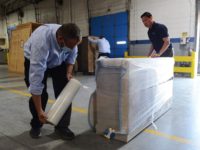The Benefits and Importance of Hands-On Training in the Restoration Industry
The Essential Role of Hands-On Training in Elevating the Restoration Industry

Photo: Delmaine Donson /E+ via Getty Images
In the fast-paced world of restoration, where attention to detail is paramount, a well-structured, hands-on training program cannot be overstated. With unpredictable weather patterns intensifying demand nationwide and AI automation advancing rapidly, being well-prepared is essential for restoration companies looking to make a lasting legacy in the industry. Granting team members access to real-world scenarios and experiences in a controlled environment provides them the opportunity to master crucial technical skills. It also provides them the resources to learn about modern technology and top trends as they are introduced to the industry – which can be invaluable for companies looking to excel against competition.
One of the biggest benefits of working within an established restoration company with a national presence, like a franchise, is gaining access to the valuable tools and hands-on training that may not be available to the majority of the industry. We require a two-week, in-person training program to immerse new franchise owners and technicians with real-life experiences they may encounter in the field. The goal is to have staff prepared for any scenario or situation they may run into with a customer. This requirement goes for full-time owners, semi-absentee owners, technicians, and foremen alike. From start to finish, team members join project managers on real jobs and experience the entire process of restoring a customer’s property instead of sitting in a classroom.
Throughout training, franchise owners and technicians are introduced to the latest technology and equipment in the field. They may be sent to a dedicated training center that gives them a first look at the actual equipment they will need to purchase in order to complete jobs. Additionally, trainees may be shown how industry-leading tools can be utilized to complete jobs more accurately and efficiently. Introducing tools like remote monitoring and other AI-automated technology like LIDAR, can help improve job accuracy and efficiency. These tools are becoming standard across the industry, especially as insurance carriers increasingly require dry logs from automated technology. This is another important consideration to keep in mind between smaller, independent restoration companies and those with a larger footprint: new owners and technicians may be introduced to every aspect of the job before opening their own doors – allowing them to launch faster and dive straight into customer jobs compared to independent restoration companies who may not have these type of resources as they work to become operational.
These training programs incorporate a mentorship component. Trainees are taught by industry veterans and master restorers who are available to answer any question and guide technicians through scenarios both during training and throughout their careers as franchise owners in the system. This mentorship creates a culture that not only builds confidence in new franchise owners to build their teams, but it also builds confidence in those new team members who receive the same resources from the program as well. Restoration jobs can come with complex scenarios and large tasks for teams – franchising with or working for a well-established brand can provide teams the resources to complete these types of jobs, and a full-time support system that is there to advise them should they run into any issues or bumps in the road. That type of established culture is just as important as the training. The ability to have franchise owners who can rely on one another for advice, collaborative discussions on industry trends, challenges, and best practices, is priceless. Established restoration companies with a national presence stress the importance of connecting with fellow owners and professionals in the industry and typically offer various networking events throughout the year to encourage collaboration within our system.
As the industry looks ahead to the future, it may be worthwhile for restoration companies to invest in comprehensive, hands-on training programs. In doing so, these businesses can help their teams stay on top of industry trends expected to roll out over the next few years. Whether that’s geolocation tech-driven equipment automated dry logs, or the standardized use of LIDAR technology, our industry is changing at a rapid pace. Providing restoration professionals with these resources, including training on how to best implement state of the art technology within their business, puts them in a better position than those trying to build their company alone. That is why comprehensive training programs are so important. They touch all aspects of the restoration industry and position owners and their teams to be difference makers.Looking for a reprint of this article?
From high-res PDFs to custom plaques, order your copy today!









